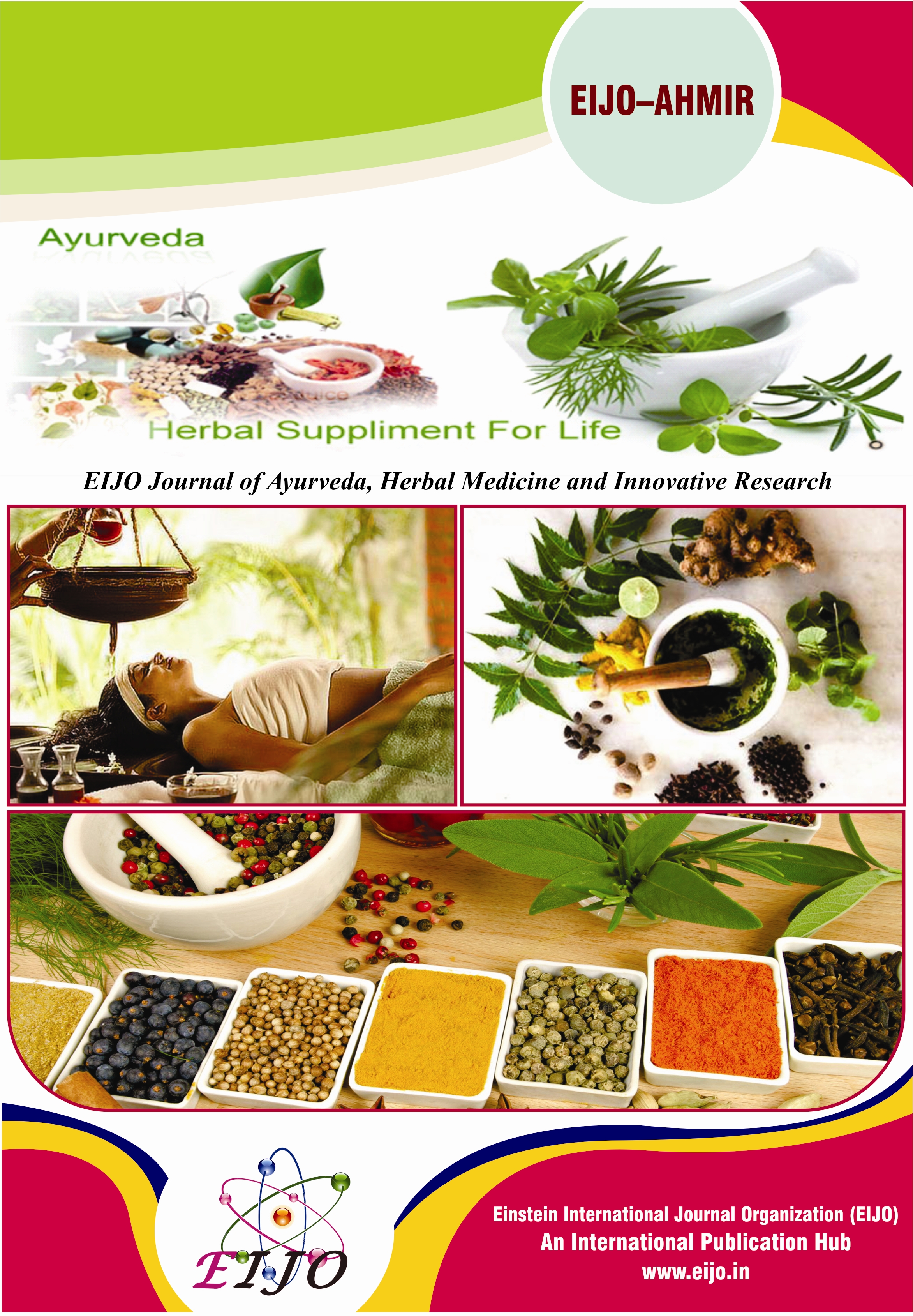JOURNALS || EIJO Journal of Ayurveda, Herbal Medicine and Innovative Research (EIJO – AHMIR) [ ISSN : 2456 - 530X ]
Introduction
Many drugs have been mentioned in Ayurveda classics. Rajnighantu is one important lexicon of plant drugs. It is one of the latest Nighantus belonging to 17th century A.D and contains most of the newly added drugs and their properties. It is considered as “king of all the Nighantus”. This book is known with the names “Abhidana Chudamani” and “Nighantu raja” The author was the first to give importance to Dravyaguna and included Dravyaguna in Astanga Ayurved showing the prime importance of plant drugs in Ayurvedic treatments. Another important aspect is it deals with name of the plants in various languages. This is the first lexicon which recognized the importance of nomenclature of plants. He introduced many new plants. Being a learned physician and grammarian the material is well discussed and arranged. Hence Rajnighantu was selected for the study to note the drugs mentioned for the treatment of Arsha.
Lifestyle diseases refer to diseases that result because of choices people make in their life. They are mostly common in developed nations where people are inclined towards eating unhealthy foods, having a sedentary lifestyle and unhealthy habits like smoking and drinking alcohol.1 Haemorrhoids are considered as Arshas in Ayurveda. There are six types of Arshas mentioned in the texts - those caused by Vata, Pitta, Kapha, Rakta and Sannipata and the congenital one told by Acharya Sushruta. In unrestrained persons, by aforesaid exciting factors particularly Viruddha (incompatible food), Adhyashana (eating before previous food is digested), Striprasanga (sexual intercourse), Utkatukasana (squatting position), Prusthayana (riding), Vegavidharana (suppression of natural urges) etc., Doshas-singly, dually, all or associated with blood are aggravated and spreads to chief passages, move downwards, reach anal folds and after vitiating them produce fleshy growths particularly in those having deficient digestive power; these tuber- like growth by rubbing with grass, wood, stone, clod, cloth etc. or by the excessive contact of cold water develop further which are known as hemorrhoids.2 Premonitory symptoms of piles include Anne-ashraddha (aversion to food), Krucchatpakti (digestion with difficulty), Amlika (hyperacidity), Paridaha (generalized burning sensation), Vishtambha (wind formation), Pipasa (thirst), Sakthisadana (weakness in legs), Atopa (flatulence), Karshya (emaciation), Udgarabahulya (belching), Akshnokshavathu (swelling in eyes), Antrakujana (gurgling sound in bowels), Gudaparikartana (cutting pain in anus), Pandurogaashanka (doubt of anemia), Grahaniroga, Kasa (cough), Shwasa (dyspnoea), Balahani (debility), Bhrama (giddiness), Tandra (drowsiness), Nidra (excessive sleep) and Indriyadourbalya (weakness of sense organs).3 The disease piles, complicated with thirst (Trushna), anorexia (Arochaka), colic (Shula), severe haemorrhage (Atiprasrutashonita), edema (Shopha) and diarrhoea (Atisara) brings end to the patient.4
References
1. Available from: http://www.rightdiagnosis.com/h/hemorrhoids/stats-country.htm#extrapwarning
2. Sharma. P.V, Susruta-Samhita with English translation of text and Dalhana’s commentary along with critical notes, Vol. II, Chaukhambha Vishvabharati Oriental publishers & distributors, first edition, Varanasi. 2000. Arshonidana, Shloka no.3, Page no 19.
3. Ibid; Shloka no.8, Page no 20.
4. Ibid; Avaraniya Adhyaya, Chapter 33, Shloka no.10 Page no 318.
5. Tripathi Brahmanand, Caraka-Samhita “Caraka-chandrika” with Hindi commentary Vol.I, Chaukhambha Surbharati Prakashan, Varanasi. Reprint 2007, Atreyabhadrakapiya Adhya, Chapter 26, Shloka no.43 Page no 483.
6. Ibid; Page no 484.
7. Ibid.



